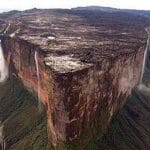We all love a good space movie, but how much of what we see is actually realistic? It’s tough to tell fact from fiction when you haven’t been to space yourself. That’s where actual astronauts come in! They’ve seen the real deal and can tell us what Hollywood gets right—and hilariously wrong.
Here are the astronauts who lend their expertise:
- Chris Hadfield: A retired Canadian astronaut, engineer, and former Royal Canadian Air Force fighter pilot. The first Canadian to walk in space!
- Garrett Reisman: An American engineer and former NASA astronaut who served on the International Space Station (ISS).
- Nicole Stott: An American engineer and retired NASA astronaut who served as a Flight Engineer on the ISS.
Let’s dive into their reviews of 10 popular space movies!
Possible spoilers ahead!
Interstellar (2014)
Interstellar, directed by Christopher Nolan, follows a team of NASA scientists and pilots as they search for a new habitable planet. The film delves into black holes and interstellar travel, but how accurate is it?
Hadfield admitted he was confused by the depiction of the black hole, noting that since no one has experienced one firsthand, it’s hard to say what’s truly accurate. Reisman gave the movie an 8/10, appreciating its portrayal of relativistic effects despite his reservations about the bookshelf tesseract scene.
Guardians of the Galaxy (2014)
Reisman says, “Look, any movie with a talking raccoon is OK in my book.” But what about Star-Lord in the vacuum of space?
Even with a helmet, exposure to a vacuum would cause barotrauma (expanding gases in the lungs and sinuses) and compression sickness. So, while Star-Lord’s sacrifice is dramatic, it’s not exactly scientifically sound.
Total Recall (1990)
This 90s action movie raises questions about reality and implanted memories. Astronauts, however, focus on the practical aspects, like the durability of helmets.
Stott points out that space helmets are much stronger than depicted in the movie. Visors are made of sturdy polycarbonate that doesn’t shatter easily upon impact.
Gravity (2013)
All experts agree that Gravity accurately captures the visuals of space. The scenery and lighting mirror Stott’s spacewalk experiences. Hadfield praises the breathtaking beauty but advises, “Just don’t pay attention to what any of the astronauts are doing.”
Reisman notes that the movie defies physics, particularly with the space debris scenario. Stott adds that every piece of debris bigger than a fist is tracked, making a surprise debris cloud unrealistic. Other inaccuracies include Sandra Bullock’s character floating away without tethering and satellites traveling at unrealistic speeds.
Armageddon (1998)
Most agree Armageddon is largely fictional. Hadfield calls it “tragic-comic” and “atrocious.”
Stott finds some accuracy in the swimming pool scene, which mirrors her training experiences at NASA. However, the 12-day training for the crew is highly improbable. The pool and T-38 jets are used to familiarize astronauts with the conditions of space.
First Man (2018)
This film depicts Neil Armstrong’s journey to becoming an astronaut. Hadfield points out flaws in the X-15 scenes, noting the vibrations would be imperceptible, and sudden silences are unrealistic. The sky’s color transition is also inaccurate.
Hadfield finds the lack of joy around the mission disappointing, as astronauts typically feel awe and excitement despite the dangers.
Passengers (2016)
How do you create gravity in space? Spinning the spacecraft generates centrifugal force. The swimming pool scene accurately shows what happens when the ship stops spinning.
Hadfield notes stopping such a large object requires significant force and restarting would take time and effort. However, the behavior of water droplets is realistic.
The Martian (2015)
Reisman rates this movie a 9, except for the jet pack glove scenario. Hadfield finds several scientific inaccuracies, such as Matt Damon’s physique and the thinness of Mars’ atmosphere.
The idea of growing potatoes on Mars is plausible. Nutrient-rich soil, heat, water, and oxygen can be created using the spaceship’s resources.
2001: A Space Odyssey (1968)
Reisman and Hadfield love this film for its artistry and scientific accuracy. Hadfield said it mirrored some of his space walk experiences.
The film accurately portrays centrifugal force creating gravity. Reisman notes the speed, about 1.5 rpm, is correct, resulting in about ½ a G, enough to keep objects in place.
Apollo 13 (1995)
Hadfield calls Apollo 13 the most realistic space movie. It tells the story of the Apollo 13 mission, where astronauts Lovell, Haise, and Swigert face a crisis.
The film accurately portrays problem-solving in spaceflight. Director Ron Howard ensured accuracy, even using NASA transcripts for dialogue. Reisman says it’s as close to a documentary as possible without actually filming in space.
Lights, Camera, Space!
So, there you have it! Astronauts have given their expert opinions on these iconic space movies. While some take creative liberties, others get surprisingly close to the real thing. Next time you watch a space movie, you’ll know what’s fact and what’s fiction!
Which of these movies is your favorite? Let us know in the comments below!










